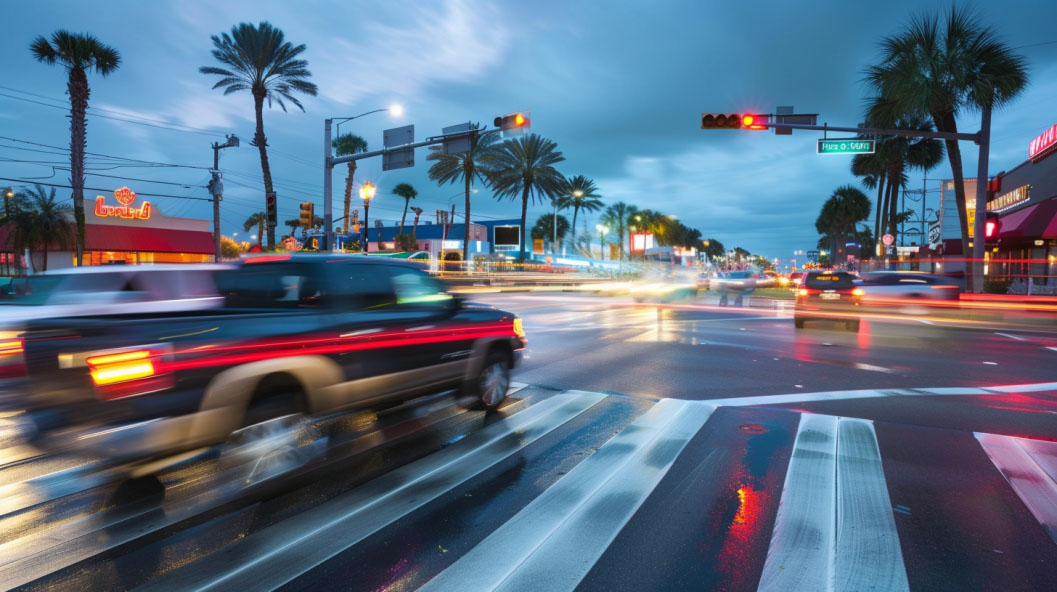St. Petersburg’s Dangerous Roads: What Drivers Need to Know
 Michael Babboni
Law
Michael Babboni
Law
St. Petersburg, Florida, is known for its sunny weather, beautiful beaches, and vibrant neighborhoods. However, many locals know all too well that some roads in this coastal city are especially treacherous. In recent years, accidents have risen sharply due to increasing traffic congestion, higher speeds on major corridors, and the growing problem of distracted driving. Whether you’re commuting along I-275, traveling through the busy intersections of Gandy Boulevard, or running errands on Tyrone Boulevard, understanding the most dangerous roads can help you navigate more safely.
Michael Babboni, also known as The St. Pete Lawyer, has spent more than 30 years assisting victims of serious accidents. With his extensive knowledge of St. Petersburg’s roads, intersections, and traffic patterns, Michael offers practical advice on how to protect yourself and your loved ones. Based on local data and years of experience, here are the seven most dangerous roads in St. Petersburg—and what you can do to stay safe on each.
1. U.S. Highway 19 (34th Street N & S)
U.S. Highway 19, also known as 34th Street, has long been one of the most hazardous routes in the area. Cutting through densely populated neighborhoods and commercial districts, it sees a mix of heavy stop-and-go traffic, frequent side-impact crashes, and pedestrian accidents. One particularly problematic spot is the intersection at 22nd Avenue North, where multiple lanes, constant vehicle flow, and pedestrian crossings combine to create a perfect storm for collisions. To reduce your risk on U.S. 19, maintain a safe distance from other vehicles, slow down at intersections, and stay vigilant for pedestrians.
2. I-275 Through Downtown St. Petersburg
Interstate 275 serves as a main thoroughfare for commuters and visitors alike, but its design and traffic volume contribute to a high accident rate. Drivers often encounter narrow merging lanes, sudden lane shifts, and vehicles traveling at excessive speeds. The exits for 5th Avenue North and I-375 are particularly challenging due to tight merges and frequent congestion. When driving on I-275, avoid sudden lane changes, keep a steady speed, and try to stay in the middle lanes for smoother travel. Above all, focus on the road and avoid distractions to safely navigate this busy highway.
3. Gandy Boulevard (State Road 694)
Gandy Boulevard connects St. Petersburg to Tampa, making it a heavily traveled route. Frequent merging and high-speed traffic contribute to numerous accidents, especially near the Gandy Bridge and Roosevelt Boulevard junction. Sudden stops and lane changes in this area increase the likelihood of collisions. To stay safe, watch for merging drivers, maintain a safe following distance, and anticipate sudden braking from vehicles ahead.
4. 4th Street North
A key north-south route parallel to U.S. 19, 4th Street North is bustling with shops, restaurants, and local businesses. This heavy traffic corridor sees a significant number of crashes, particularly between 22nd Avenue North and 38th Avenue North. Unpredictable drivers making left turns, jaywalking pedestrians, and bicyclists darting through traffic add to the challenges. Defensive driving is essential here—slow down near intersections, keep an eye out for pedestrians, and exercise caution when making left-hand turns.
5. Central Avenue
Central Avenue may be one of St. Pete’s most iconic streets, but it’s also one of the most dangerous. From 16th Street to 34th Street, the combination of narrow lanes, parked cars, ride-share pickups, and constant pedestrian activity results in frequent collisions. Drivers often face sudden stops when pedestrians cross unexpectedly or cars pull out from parallel parking. Keeping your speed low, remaining alert, and yielding to pedestrians are critical to avoiding accidents on this popular road.
6. Tyrone Boulevard
Tyrone Boulevard’s proximity to the Tyrone Square Mall and numerous other shopping centers means constant traffic entering and exiting parking lots. This commercial corridor is notorious for rear-end collisions and side-impact crashes. The intersection with 66th Street North is especially dangerous due to heavy vehicle flow and unpredictable driver behavior. To reduce your risk, use turn signals well in advance, stay alert for sudden stops, and give yourself plenty of space between vehicles.
7. 66th Street North (Alt U.S. 19)
A wide and fast-moving route, 66th Street North runs through a mix of residential and commercial areas. Speeding, running red lights, and distracted driving are common issues that lead to frequent crashes at intersections like 54th Avenue North and 38th Avenue North. Even if the light is green, approach these intersections with caution and be prepared for drivers who may attempt to run a yellow light or make abrupt lane changes.
How to Stay Safe on St. Petersburg’s Roads
Navigating these dangerous roads requires extra care and defensive driving. Plan your routes ahead of time, avoid peak travel hours when possible, and use GPS tools that provide real-time traffic alerts. Drive patiently and be prepared for sudden stops, particularly in high-risk areas. Most importantly, stay focused on the road—eliminating distractions like mobile devices and limiting interactions with in-car systems can significantly reduce your chances of being involved in an accident.
Injured in an Accident? Contact Michael Babboni – The St. Pete Lawyer
If you or a loved one has been injured on any of these dangerous roadways, you don’t have to navigate the aftermath alone. Michael Babboni has decades of experience as a trusted St. Petersburg personal injury attorney, helping local drivers secure compensation for medical expenses, lost income, and pain and suffering. With his deep knowledge of the area’s traffic patterns and legal system, he’s uniquely qualified to handle your case. Contact The St. Pete Lawyer today for a free consultation and find out how he can help you get back on the road to recovery.
